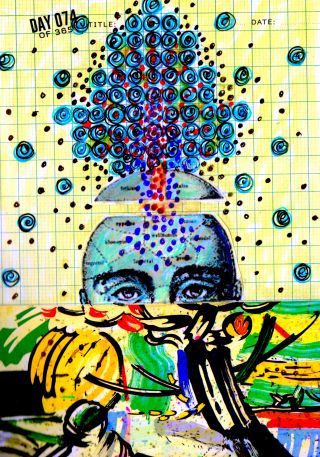Dre Muriel Salmona : Quelle prise en charge pour les personnes traumatisées par les attentats ? Comment prendre soin d’elles, les soutenir et les comprendre ?
Passé l’état de choc émotionnel des premiers jours, que toutes les victimes et leur entourage ont ressenti, que va-t-il se passer pour ces personnes dans les semaines, les mois, voire les années qui viennent ? Comment prendre soin d’elles ?
Comment soutenir les victimes, leurs familles, mais aussi les témoins de ces attaques ?
La prise en charge psychologique de toutes les personnes impactées par les attentats est essentielle
Les actes terroristes atroces perpétrés sont des événements extrêmement traumatisants pour toutes les personnes qui en ont été victimes. Il y a aussi toutes celles qui ont été impliquées plus ou moins directement : leurs proches, celles qui les ont secouru ou ont été témoins extérieurs des attentats. On ne doit pas oublier toutes celles qui ont déjà vécu des actes criminels et dont le traumatisme se réactive, voire même toutes celles qui ont été exposées à des images traumatisantes et des informations stressantes en boucle.
Les traumatismes psychiques
Les traumatismes psychiques sont de véritables blessures neuro-psychologiques entraînant de grandes souffrances. Ils nécessitent une prise en charge immédiate. Cette prise en charge est, en général, proposée en urgence dans le cadre des cellules d’urgences médico-psychologiques.
Mais les troubles psychotraumatiques s’installent fréquemment dans la durée. Il s’installent parfois pendant des années, parfois de façon décalée, avec de lourds retentissements sur la santé des personnes traumatisées. Il est alors impératif de continuer à les accompagner et à leur apporter des soins spécialisés.
Réanimer psychologiquement les victimes
Dans un premier temps, les personnes traumatisées ont besoin d’être secourues, sécurisées et protégées de tout stress. Il faut apaiser leur détresse et les sortir de leur état de choc et de sidération. Il s’agit de les réanimer psychologiquement, de les aider à retrouver le cours de leur pensée qui s’est interrompu au moment du trauma, de leur parler, de les réconforter et de les ramener dans le monde des humains.
Elles ont également besoin d’être entendues, soutenues et comprises. Il est important qu’elles puissent partager leurs émotions, leurs craintes, leurs questionnements en toute sécurité sans être culpabilisées, et en respectant leur rythme, sans ressentir qu’elles gênent ou sont inadéquates. De plus, elles ont besoin d’être informées sur les impacts traumatiques et de savoir que leurs réactions sont normales et universelles en cas de situations de violences aussi extrêmes.


